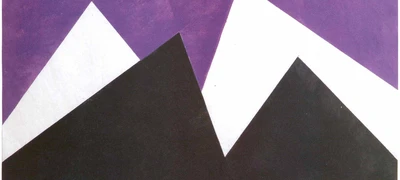Hermann Glöckner. Works 1909-1985

The ifa exhibition Hermann Glöckner. Works 1909–1985 included works from nearly all the different phases in Glöckner’s career, providing insights into his extensive oeuvre and the thematic and technical diversity of his art. It was on tour from 1993 to 2006. Alongside expressive drawings, semi-abstract portraits, and landscapes from his early realist phase in the 1920s, there are also observations of reality presented in constructivist transformation, and experiments with non-figurative and geometrical constructions. The exhibition presents Glöckner’s colour-field paintings, spontaneous and intuitive informal works, collages, and three-dimensional objects from his late phase. With this exhibition, ifa – Institut für Auslandsbeziehungen addressed the aim of including significant artistic work done in former East Germany in its exhibition programme.
28 Stops
Auckland, New Zealand
Gus Fisher Gallery
2006
20.02.–31.03.
Masterton, New Zealand
Aratoi Wairarapa Museum of Art and History
2005/06
16.10.–22.01.
Invercargill , New Zealand
Southland Museum and Art Gallery
2005
21.07.–25.09.
Artists
7 Contributors
Christian Dittrich,
Rudolf Mayer,
Werner Schmidt,
Bernd Burock (ifa),
Concept
About the exhibiton
The exhibition Works 1909–1985 witnesses Glöckner’s calm resolution and inner freedom, the integrity of his personality, and the persuasiveness of his art. It presents the works of an artist who was shy of the loud art business, preferring throughout his life to work reclusively. He secured a living with his sgraffito and art-in-architecture commissions, while his own artworks were rarely available on any market. Nonetheless, or perhaps even because of this situation, he was able to very determinedly develop his own art. He was entirely self-taught, an experience which led to his own insights on the imagery and form of his work.
Glöckner’s works share two characteristic features. Firstly, his approach to material was consistently hand-made, so that there is neither any striving for perfection nor any form of marketable production. Secondly, his works are based conceptually on a symbiosis of deep observations of nature and a rule-based approach to form. For Glöckner, these two things are mutually interdependent. His special ability to derive artistic form from nature, and more particularly the laws of nature that determine our world, was evident very early in his career. He developed form through the medium of the drawing, and through coincidence and experiment. He began as a draftsman, and this influenced his entire oeuvre.
Glöckner’s perspective on nature is characterised by simplicity and modesty. Details are incorporated into larger formal units and then very clearly placed horizontally and vertically in his compositions. For example, he saw the flat surfaces of fields in landscapes, and those of the rooves and sides of buildings, and he then transformed these into the shapes and forms of his works.
The ifa exhibition is divided into seven different groups of works.
- Swings: exercises in concentration, joyful play, endless movement, the flow of life.
- Profiles: figurative exception in Glöckner’s otherwise very geometrical world, an intermediary space between personification and figuration, with the figures anonymised by means of radical side views of their heads or faces.
- Tempera sheets: Glöckner as a painter, geometrical colour fields and calligraphy.
- Linoleum prints: the enjoyment of experimenting with prints, work with colours, and no attempt to merchandise these works.
- Thread and glass prints: monotypes made of discarded materials demonstrate Glöckner’s playfulness, with attractive surfaces and dynamic form.
- Folds: the ultimate development of the formal principle of the early images of rooves, following a simple basic idea, the expression of an emergent form and basic principle: halving surfaces, quartering and vertical divisions, diagonals from one corner to the other, the opposite corner, etc.
- Sculptural works: following fold lines, drawings expand into space and become objects made of paper, wood, metal, and plastic.
These groups of works were developed iteratively – with new approaches and recourse to ideas already defined. Glöckner approached his own “leitmotifs” in a cyclical rather than continuous linear manner. All of his works combine the only seeming opposites of geometry and poetry. He was an artist who thought and worked across borders. His work is modest in means and rich in effect.